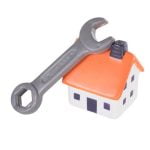Are you in the market to buy or sell a home? Or simply interested in knowing more about the history of your current property? Understanding the details of past home improvements can be invaluable.
From upgrades and renovations to repairs and maintenance, having access to this information can provide valuable insight into the overall condition and value of a property. In this article, we will explore how to get info on past home improvements, why it’s important, where to start your search, and various resources available to homeowners and potential buyers.
Knowing the specific details of past home improvements is crucial for both home buyers and sellers. For buyers, it can offer peace of mind by providing a comprehensive understanding of the property’s condition. It can also help in gauging whether any work done meets local building codes and standards, ensuring safety and structural integrity.
For sellers, having a record of past modifications and upgrades can be advantageous in showcasing their property’s value and upkeep. Whether buying or selling, having access to this information can have a significant impact on negotiations and decision-making processes.
So, where does one begin when seeking out information on past home improvements? The first step is typically examining any available documents or records related to the property. This may include inspection reports, permits, receipts for renovations or repairs, contractor invoices, warranty information, or any other documentation associated with past improvements.
Additionally, reaching out directly to the homeowner or seller is another avenue worth exploring. Polite inquiries may yield valuable insights into the work that has been done on the property over time.
In our subsequent sections, we will delve into various methods for accessing information on past home improvements – from online resources such as databases and websites dedicated to housing records; to government-related avenues involving public records and permits; as well as considering professional inspections as an alternative option for obtaining thorough assessments.
By seeking out this essential knowledge on previous home improvements, homeowners and potential buyers alike can make well-informed decisions that ultimately benefit them now and in the future.
Why It’s Important
Understanding the significance of knowing the details of past home improvements is crucial for both home buyers and sellers. For buyers, having knowledge of past home improvements can provide valuable insight into the condition and maintenance history of the property.
This information can help in making an informed decision about purchasing a home and potentially avoiding unforeseen issues. On the other hand, for sellers, being able to provide detailed information about past home improvements can enhance the property’s value and appeal to potential buyers.
There are several reasons why knowing the details of past home improvements is important for both buyers and sellers:
- Assessing Property Condition: Understanding what improvements have been made in the past can give buyers a better understanding of the overall condition of the property. This includes knowing when major systems such as HVAC, plumbing, or electrical were last updated or replaced.
- Verifying Legal Compliance: Buyers need to ensure that any past home improvements were done in compliance with building codes and regulations. Sellers must be able to provide evidence that all necessary permits were obtained for any significant work done on the property.
- Resale Value: Knowing about past home improvements can impact the resale value of a property. Upgrades such as kitchen renovations, bathroom remodels, or new roofing can add value to a home and increase its marketability.
Overall, having access to information on past home improvements is essential for making well-informed decisions when buying or selling a home. It provides transparency and peace of mind for both parties involved in a real estate transaction.
Where to Start
When it comes to obtaining information on past home improvements, the first step is to begin the search in the most obvious place – the property itself. Whether you are a potential buyer looking for details on a home’s renovation history or a current homeowner in need of documentation for future reference, starting with the property is crucial.
Check Your Own Records
If you are the current homeowner looking for information on past renovations, start by checking your own records. This could include receipts, permits, and contracts from when the improvements were completed. If you have hired contractors or professionals to carry out any work, they may also have documentation that can provide details on the scope and timeline of the projects.
Consult Previous Listing Information
For potential buyers interested in learning about a home’s renovation history, consulting previous listing information can be helpful. Previous listings may mention any major renovations or upgrades that have been done to the property. Additionally, real estate websites often provide a history of past listings and sales for properties, which can offer insight into any changes that have been made over time.
Visit Local Building Departments
Another important place to search for information on past home improvements is the local building department or planning office. These government agencies maintain records of building permits and inspections, which can provide detailed information about renovations or additions made to a property. By visiting these offices or accessing their online databases, you can obtain valuable insight into the history of home improvements for a specific property.
Online Resources
When it comes to gathering information on past home improvements, online resources can be an invaluable tool for both home buyers and sellers. There are several websites and databases that offer insights into the history of a property’s renovations and upgrades. Here are some online resources to consider:
- Zillow: Zillow provides a “home details” section that may include information on past home improvements, such as the year a particular feature was added or upgraded.
- Realtor.com: This website often includes a section dedicated to property history, which can reveal past renovations or remodeling projects.
- HomeAdvisor: HomeAdvisor offers a “True Cost Guide” that provides average costs for various types of home improvement projects, which can give insight into what work has been done on a property.
In addition to these popular real estate websites, there are also local databases and resources specific to certain regions or municipalities that may have detailed information on past home improvements. It’s important for both buyers and sellers to explore these options in order to gain a comprehensive understanding of a property’s history.
Furthermore, utilizing online resources can help expedite the process of gathering information on past home improvements, especially when time is limited. These platforms can provide quick access to valuable data that can influence important decisions related to buying or selling a home. By leveraging these tools, individuals involved in real estate transactions can make more informed choices regarding property investments.
Government Records
Accessing public records and permits for home improvements can provide valuable insight into the history of a property’s renovations. By obtaining this information, homeowners and potential buyers can gain a better understanding of the quality of past work done on the property, as well as ensure that all necessary permits were obtained.
Online Databases
Many local government websites offer online databases where individuals can search for building permits and records of past home improvements. These databases are a convenient way to access information from the comfort of your own home. By entering the address of the property, users can view details about previous renovations, including which permits were filed and when the work was completed.
Visiting Local Government Offices
In addition to online resources, individuals can also visit their local government offices, such as the county clerk’s office or building department. Staff at these offices can assist in locating and obtaining public records related to home improvements. It’s important to come prepared with the property address and any other relevant details to streamline the search process.
Importance of Public Records
Accessing public records and permits for home improvements is crucial for homeowners looking to sell their property, as well as for potential buyers conducting due diligence. This information can help identify any unpermitted work or issues with past renovations, ensuring that any necessary repairs or legal matters are addressed before completing a real estate transaction. By making use of government resources, individuals can make informed decisions about their real estate investments based on the history of home improvements.
Asking the Homeowner
When it comes to gathering information on past home improvements, one of the most direct approaches is to ask the current homeowner or seller. However, it’s important to navigate this conversation with sensitivity and respect. Keep in mind that the homeowner may have personal attachments to the property and might be hesitant to disclose certain details.
One way to broach the topic is by expressing genuine interest in the history of the home. Letting the homeowner know that you value their insight and that you’re committed to maintaining or building upon the work they’ve done can help them feel more at ease. Additionally, assure them that any information they provide will be used responsibly and solely for your own understanding.
Another effective strategy is to approach the conversation as a means of ensuring transparency and full disclosure during the real estate transaction process. Emphasize that having a clear understanding of past home improvements can benefit both parties in negotiations and prevent any potential issues from arising later on.
Finally, if you sense any reluctance from the homeowner, offer them an opportunity to share information at their own pace. Provide them with your contact information and encourage them to reach out if they recall any relevant details after your initial conversation.
| Tips | Approaches |
|---|---|
| Express genuine interest in home history | Collaborative approach |
| Emphasize transparency and negotiation benefits | Reciprocal benefit perspective |
| Offer opportunity for slow disclosure process | Sensitive consideration of homeowner’s comfort level |
Professional Inspections
When it comes to gathering information on past home improvements, hiring a professional inspector can be an invaluable option for both home buyers and sellers. A professional inspector can provide a comprehensive assessment of the property, including details on past renovations, repairs, and upgrades. This information is crucial for buyers who want to ensure that the home has been well-maintained and for sellers who want to showcase the value of their property.
Professional inspectors have the knowledge and expertise to thoroughly evaluate the quality and condition of past home improvements. They can identify any potential issues or red flags that may not be apparent to the untrained eye. Additionally, they can provide an objective assessment of the workmanship and materials used in previous home improvement projects, giving buyers and sellers peace of mind.
In hiring a professional inspector, it’s important to choose someone with relevant experience and credentials. Look for inspectors who are licensed, insured, and have a good reputation in the industry. By investing in a professional inspection, both buyers and sellers can gain valuable insights into past home improvements, making it a worthwhile step in the real estate process.
| Professional Inspector Benefits | Home Improvement Assessment |
|---|---|
| Comprehensive Evaluation | Detailed Information on Renovations |
| Identification of Potential Issues | Assessment of Workmanship and Materials Used |
| Objective Assessment | Peace of Mind for Buyers and Sellers |
| Credentialed Inspectors | Reputation in Industry Matters |
Conclusion
In conclusion, obtaining information on past home improvements is crucial for both home buyers and sellers. Knowing the details of any renovations or upgrades can provide valuable insight into the condition and maintenance of a property. This knowledge can also impact the pricing and negotiation process for both parties involved in a real estate transaction. Therefore, it is essential for individuals to take the necessary steps to gather information on past home improvements before making any decisions regarding a property.
Whether it’s through online resources, government records, or simply asking the homeowner directly, there are various avenues available for individuals to obtain the information they need. Home buyers and sellers should consider utilizing these resources to ensure that they have a comprehensive understanding of the history of home improvements for a property. Additionally, hiring a professional inspector to assess past home improvements can provide an expert opinion on the condition of any renovations or upgrades.
As readers consider entering into a real estate transaction or putting their own property on the market, it is important to emphasize the significance of seeking out information on past home improvements. By taking these necessary steps, individuals can make more informed decisions that ultimately benefit them in their real estate endeavors.
Whether it’s for peace of mind as a buyer or accurately presenting a property as a seller, having this information is an essential aspect of any real estate transaction.
Frequently Asked Questions
How Do I Find Information About My Old House?
Finding information about your old house can be a bit of a detective work. Start by visiting your local historical society or public library to research old maps, photographs, and property records.
You can also try searching online databases, newspaper archives, or even reaching out to previous owners or neighbors for any information they might have. Another option is to hire a professional historian or researcher who specializes in uncovering the history of homes.
How Can I Find Out What My House Looked Like Years Ago?
If you want to find out what your house looked like years ago, you can start by looking for historical photographs of the area or your specific property. Local historical societies, libraries, and online archives are good places to start your search.
You can also check with previous owners or neighbors to see if they have any old pictures of the house. Additionally, examining any architectural features or elements that might indicate its original appearance can provide some clues.
How Do I Keep Track of Home Improvements?
Keeping track of home improvements is important for several reasons, including maintaining the value of your property and for potential future sales purposes. One way to keep track is by creating a detailed spreadsheet that lists all the improvements made along with their costs and dates. It’s also helpful to keep receipts, warranties, and contracts related to the improvements organized in one place.
Taking before and after photos is another useful method for documenting home improvements over time. Lastly, consider using digital tools such as home improvement apps or software to help you stay organized and keep track of everything in one place.

I’m thrilled to have you here as a part of the Remodeling Top community. This is where my journey as an architect and remodeling enthusiast intersects with your passion for transforming houses into dream homes.





